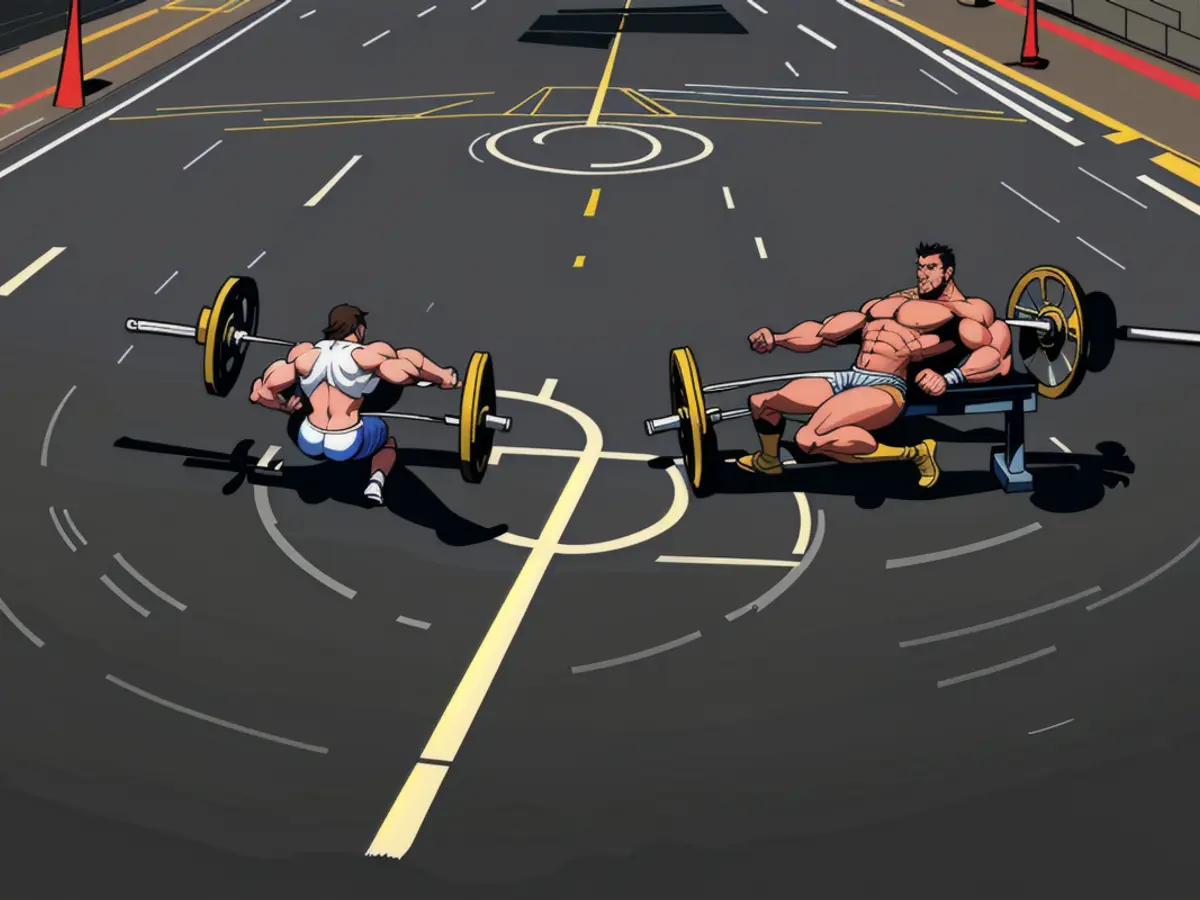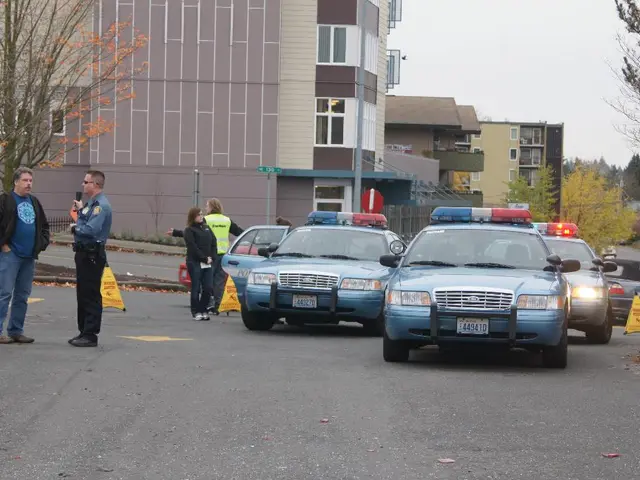McLaren's action plan raised questions
Max Verstappen continued his reign in Japan, taking home the Formula 1 Japanese Grand Prix for the fourth time in a row. But is McLaren playing it too safe? While a Mercedes teen is breaking records.
Verstappen leapfrogged into his team's arms after crossing the finish line, securing his 64th career win. The Red Bull driver outsmarted Lando Norris in a wheel-to-wheel battle, forcing the championship leader to skid off the track onto the grass.
Verstappen, the relentless world champion, was quick to downplay his victory. "We still have a long way to go if we want to fight for the championship," he said. Team Principal Christian Horner praised Verstappen's performance, calling him "our Mr. Motivator."
Verstappen's rivals can't help but notice the champion's unwavering drive. "No mistake, driving absolutely on the limit - that's only him," Red Bull motorsport advisor Helmut Marko commented.
McLaren Just a Hair's Breadth Away
McLaren came close, but not close enough. Perhaps Oscar Piastri could have closed the gap to Verstappen. However, Piastri didn't receive the green light from the pit wall to overtake Norris in the race's final stages, despite feeling capable of catching up to Verstappen on his 24th birthday.
Team Principal Andrea Stella explained the decision, stating that overtaking at Suzuka requires a significant performance advantage, typically around 0.7 to 0.8 seconds per lap, due to the track's notorious difficulties in passing. Piastri's pace advantage was not deemed substantial enough for a successful overtake without risking a Safety Car deployment, which could have disadvantaged them further.
Verstappen Sets Pole Position After 280 Days
Verstappen hadn't led the starting grid since the Austrian Grand Prix at the end of June last year. He broke his 280-day pole position drought in style, masterfully navigating the Suzuka Circuit. German driver Nico Hülkenberg finished 16th, a disappointing result for the Alfa Romeo driver.
A Young Mercedes Rookie Makes History
Mercedes rookie Kimi Antonelli became the youngest driver ever to lead a Formula 1 race. The 18-year-old finished sixth and also set the fastest lap of the race, breaking Verstappen's previous record.
As Antonelli pitted in lap 32, Verstappen retook the lead with a 1.5-second advantage over the two McLarens. The internal battle between Norris and Piastri allowed Verstappen to cruise to his first season win. "We're not giving up on the championship yet," Marko declared.
Source: ntv.de, Martin Moravec and Thomas Wolfer, dpa
Enrichment Data:
Oscar Piastri was not allowed to overtake Lando Norris during the Japanese Grand Prix primarily due to strategic decisions made by the McLaren team, despite Piastri's belief in his pace advantage. Here are the key reasons:
- Strategic Considerations: McLaren's team principal, Stella, explained that overtaking at Suzuka requires a significant performance advantage, typically around 0.7 to 0.8 seconds per lap, due to the difficulties in passing. Piastri's pace advantage was not deemed substantial enough for a successful overtake without risking a Safety Car deployment, which could have disadvantaged them further.[1][4]
- Tyre Degradation: The Suzuka circuit, with its new surface, became a low degradation track, meaning the tyre life remained consistent throughout the race. This reduced the effectiveness of strategic maneuvers like undercuts or overcuts, which rely on significant tyre deltas to gain an advantage.[1][4]
- Qualifying Performance: Lando Norris felt that the outcome of the race was largely decided by qualifying results, as Verstappen took pole and maintained a clean lead. Norris believed that even with slightly better pace, McLaren's cars couldn't capitalize due to dirty air and the impossibility of passing at Suzuka.[2][3]
- Risk Management: Team orders often balance short-term gains against strategic risks. In this case, allowing Piastri to overtake Norris would have required significant risks, such as exposing them to potential Safety Car situations, which could have cost positions and points.[1][2]
In summary, Piastri wasn't allowed to overtake Norris primarily due to the lack of a substantial pace advantage, strategic limitations posed by low tyre degradation and difficulty in overtaking, and the risks associated with changing positions at Suzuka.
- "I'm not going to be able to do this," Oscar Piastri might have thought, as he watched the green light elude him from the pit wall during the final stages of the race, preventing him from overtaking Lando Norris.
- The McLaren team's strategic decisions were a stark contrast to the dominating performance of the Mclaren-Honda partnership in their glory days.
- After the race, Piastri, still feeling capable of catching up to Max Verstappen on his 24th birthday, found solace in a group chat on WhatsApp, discussing the 'what-ifs' of the race with his team and friends.








